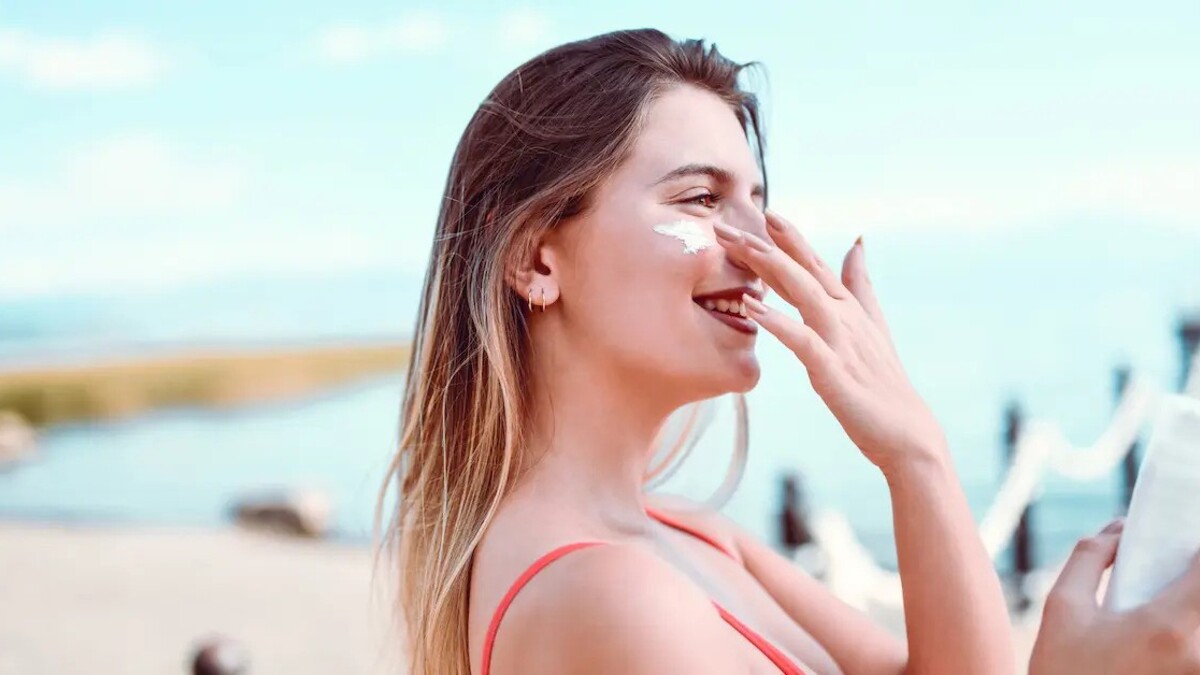A whole afternoon may be spent just sitting, reading, listening to music, or doing simple activities like knitting or munching peanuts while enjoying the warmth of the winter sun. We all loved our November picnics because of this soul-calming sun—until, of course, smog wrecked our plans.
In contrast to the strong summer sun, which necessitates tight protection to prevent problems like heatstroke, the winter sun feels more like an ally. As a result, sunscreen eventually loses ground as consumers frequently disregard sun protection during the colder months. Nonetheless, dermatologists strongly advise applying sunscreen throughout the winter.
It’s a fallacy that sunscreen is only necessary in the summer or when going outside.
During the winter months, the sun may feel mild or be obscured, but that doesn’t mean UV rays aren’t present. Actually, now is the time of year to be especially wary about UVA radiation.
UV rays are present all year round, regardless of climate, thus sunscreen is not only for the summer. “UV A rays penetrate deeper and cause premature ageing and skin damage, while UV B rays may be weaker during the winter,” says Dr. Ruben Bhasin Passi, Consultant, Dermatology, CK Birla Hospital, Gurugram.
All year long, regardless of the season, there is blue light, infrared (IR) radiation, UV radiation, and UV B radiation. In order to protect the skin from these damaging rays and avoid damage, broad-spectrum protection is essential,” says Dr. Sagar Gujjar, MD, Dermatologist, Founder and Head, Skinwood, Mumbai.
In essence, you need sunscreen in the winter because UV radiation can still cause skin damage, accelerated ageing, and an increased risk of skin cancer. This is true even on cloudy days.
What about the application?
You must reapply sunscreen every two to three hours; just applying it once is insufficient. Even in the cold, the norm is the same.
Regardless of the type, the effectiveness of sunscreen usually lasts for two to three hours after application. Dr. Sagar Gujjar advises reapplying frequently to guarantee ongoing protection, particularly between 11 am and 2 pm if you’re outside between 9 am and 4 pm.
In a same vein, you shouldn’t cut back on your sunscreen application during the winter. while applying sunscreen to your face, even while reapplying, adhere to the two-finger rule.
“Even though the winter sun feels softer, you should still wear sunscreen.” According to Dr. Passi, UV A rays harm and age your skin, and their intensity is unaffected by temperature or sun strength.
It is much more important to use a lot of sunscreen when you are in a snowy environment.
“Snow and ice can increase exposure by reflecting UV rays.” Dr. Passi adds that using less sunscreen exposes the skin to injury and leaves certain areas vulnerable.
How to choose the right sunscreen
Selecting a high-quality sunscreen is essential to guaranteeing adequate UV protection. PS: Just because a product is pricey or popular doesn’t indicate it works. Effective sunscreens are also available at pharmacies.
Here’s a quick guide to help you select the right sunscreen:
- Broad-spectrum protection: Choose a sunscreen that offers protection against both UV A and UV B rays.
- Non-comedogenic: Opt for a sunscreen labelled “non-comedogenic” or check its ingredients to ensure it won’t clog your pores. You can even use ChatGPT to check ingredients.
- PA value: Pay attention to the PA value, which indicates protection from UV A rays. PA+ means low protection, PA+++ is high, and PA++++ indicates very high UV A protection. Experts recommend PA+++ for regular use.
- SPF factor: Contrary to popular belief, there is barely any difference between SPF 30 and SPF 50. SPF measures how well a sunscreen protects you from sunburn.
“A sunscreen with SPF 15 blocks 93% of UV B radiation, SPF 30 blocks 97%, SPF 50 blocks 98%, and SPF 100 blocks 99% of UV B rays from reaching your skin. So, there isn’t a significant difference between SPF 30 and SPF 100,” writes Dr Jaishree Sharad in her book The Skincare Answer Book. Ideally, a sunscreen should be SPF 30 or above. - Skin type: Choose a sunscreen suitable for your skin type. For oily or acne-prone skin, opt for non-comedogenic, oil-free formulas. For dry skin, look for hydrating ingredients like glycerine, hyaluronic acid, or ceramides. For sensitive skin, physical sunscreens with zinc oxide and titanium dioxide are ideal, as they are less likely to cause irritation.
To keep your skin happy and healthy this winter, don’t skip the moisturiser, either!

